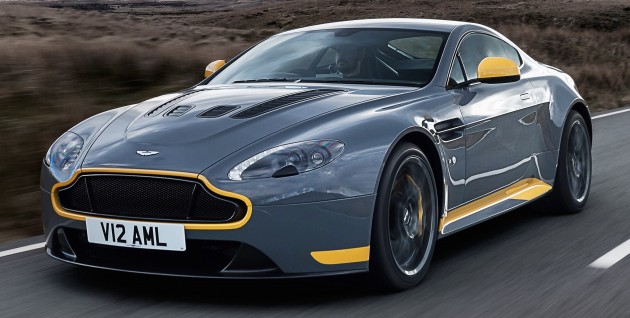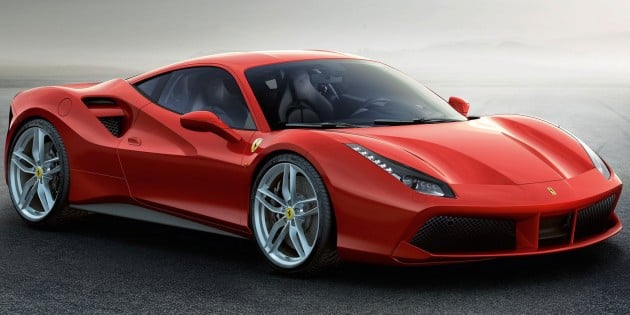According to the European Environment Agency (EEA), two manufacturers – Aston Martin and Ferrari – will face penalties for exceeding their specific emissions target in 2015. This comes following the release of the agency’s latest annual report, which provides a summary of carbon dioxide (CO2) emission levels of new passenger cars in the European Union (EU) in 2015
Ferrari will be fined a total of 410,760 euros (RM1,915,593) for exceeding its specific emissions target of 295 g CO2/km by 4.448 g CO2/km, while Aston Martin will be forced to pay 36,370 euros (RM169,612) for registering 312.204 g CO2/km, 2.204 g CO2/km more than its specific target.
In its report, the agency revealed that new cars sold in the EU in 2015 emitted on average 119.5 grams of CO2/km, which was 8% below the agency’s target for the year of 130 g C02/km. It adds that average CO2 emissions from new cars decreased by 27% in the last 10 years, and to ensure it meets the EU 2020/21 targets of 95 g C02/km, it will need to continue decreasing at a similar pace.
The agency also listed out a few manufacturers that are well on track to reach the 2021 target, including Peugeot, Renault, Citroen and Toyota. Toyota had the highest percentage of new vehicles having emissions below 95 g CO2/km (41 %), while Peugeot (104 g CO2/km) and Citroen (106 g CO2/km) had the lowest average CO2 emissions for new passenger cars registered in 2015.
On the other hand, other automakers like Fiat Chrysler Automobiles, Opel, Ford, Volvo, Daimler, Audi and BMW will have to reduce emissions at a faster pace to meet the 2021 target even though they met their 2015 goals, according to data from the report.
Looking to sell your car? Sell it with Carro.




I thought Aston had a city car (Cygnet) based on a Toyota, which should have helped them get better CO2 results. Guess they still have too many old cars with big V12 engines in their stable? Ferrari on the other hand don’t have any mini car to help out. So probably will have to make more forced induction engines. Tough times for these performance minded car makers. But how the heck did Lamborghini not get fined? They only sell normally aspirated V12 and V10 based cars.
It is sad to see that exotic car makers that make less than 10,000 cars per year fined for exceeding just tiny amounts of CO2 emission. In order to comply with stringent CO2 target set by the EU, they already have to resort to turbocharged engines, which rob their cars of characterful NA engines like the one in 458 Speciale. Owners of these cars rarely drive their cars daily, their emissions have very little impact to the environment compared to mass produced cars like Volkswagens or Toyotas.
410,760 euros is nothing for ferarri. I bet they dont even care
Take some time off and read the report. PT might be advised to increase the detail in this piece, it can be misleading to readers. Both Aston and Ferrari have low-volume exemptions and still did not manage to meet the requirement. The headline target is 95 gco2/km, adjusted for average pool weight. JLR has a high avg weight, so their target avg emission is higher. I don’t know whats the penalty for not achieving these targets. But its a good example of regulatory pressure leading to real impact.
Is it feasible? Well, the pressure to comply in Europe makes all cars available in all regions show reductions in emissions – the EU should do a study on how overall emissions worldwide have reduced due to EU regs. This is as no carmaker that is going to focus R&D on emission reduction specific to Europe and ignore other markets, it makes much more sense for scale to produce cars that comply globally. SO having seen lower emissions, there has not been a massive increase in prices. So EU regulates safety and emissions, and all these factors have still made EU sales competitive, and sales continue to grow.
SO the lesson here is: never take carmakers and industry associations complaints seriously, they just want to protect fat margins, when in reality to comply to safety and emission regulations, its just not that expensive and entirely feasible.